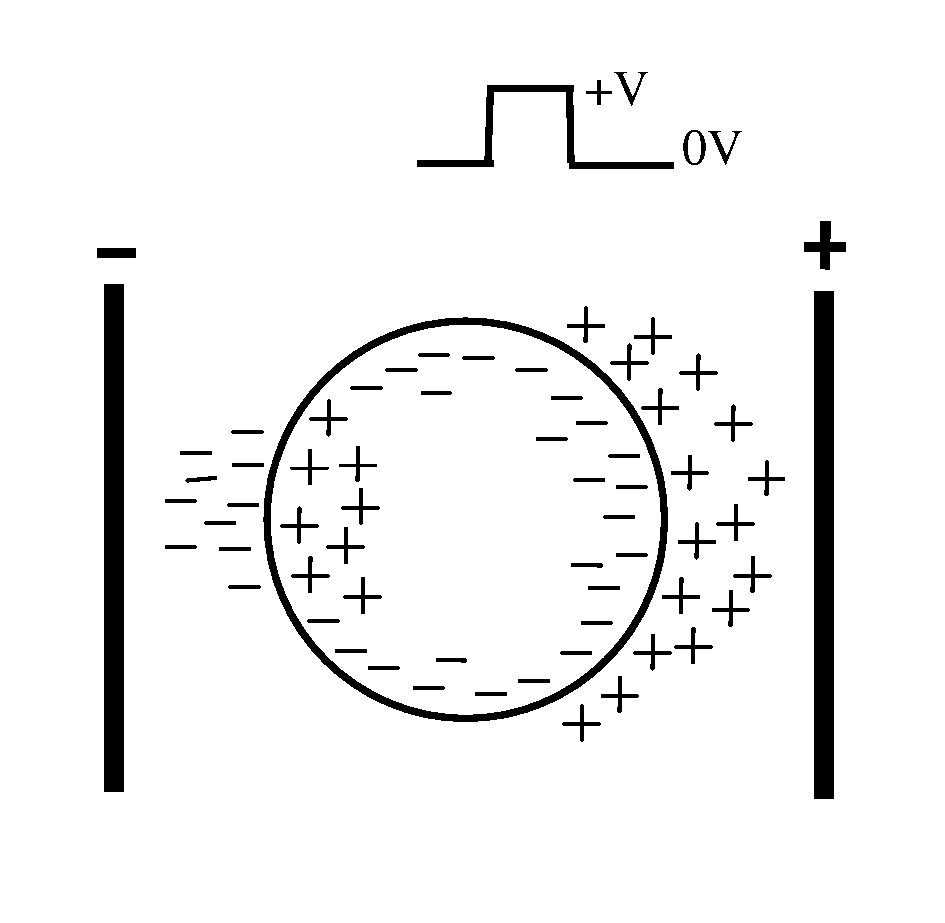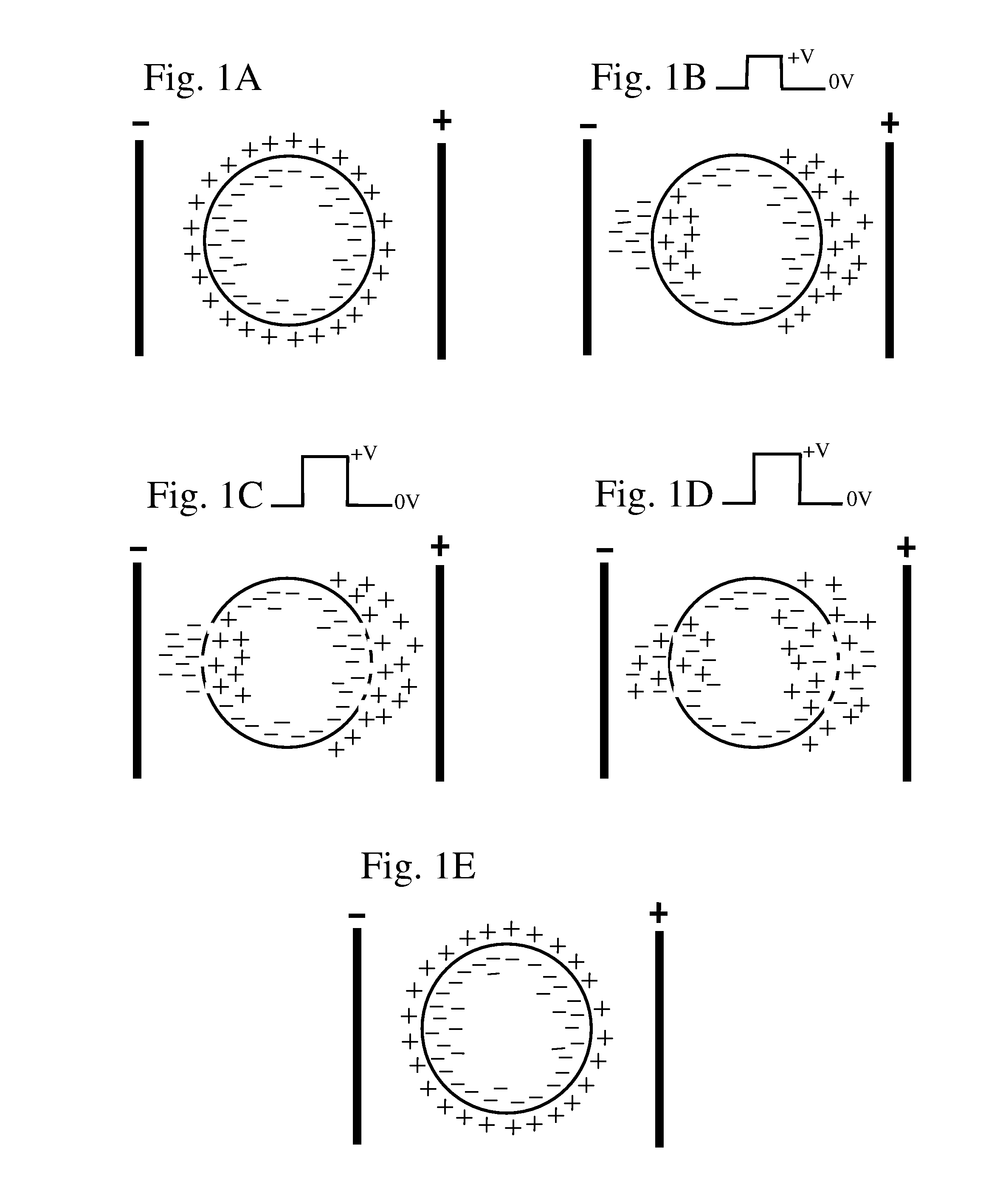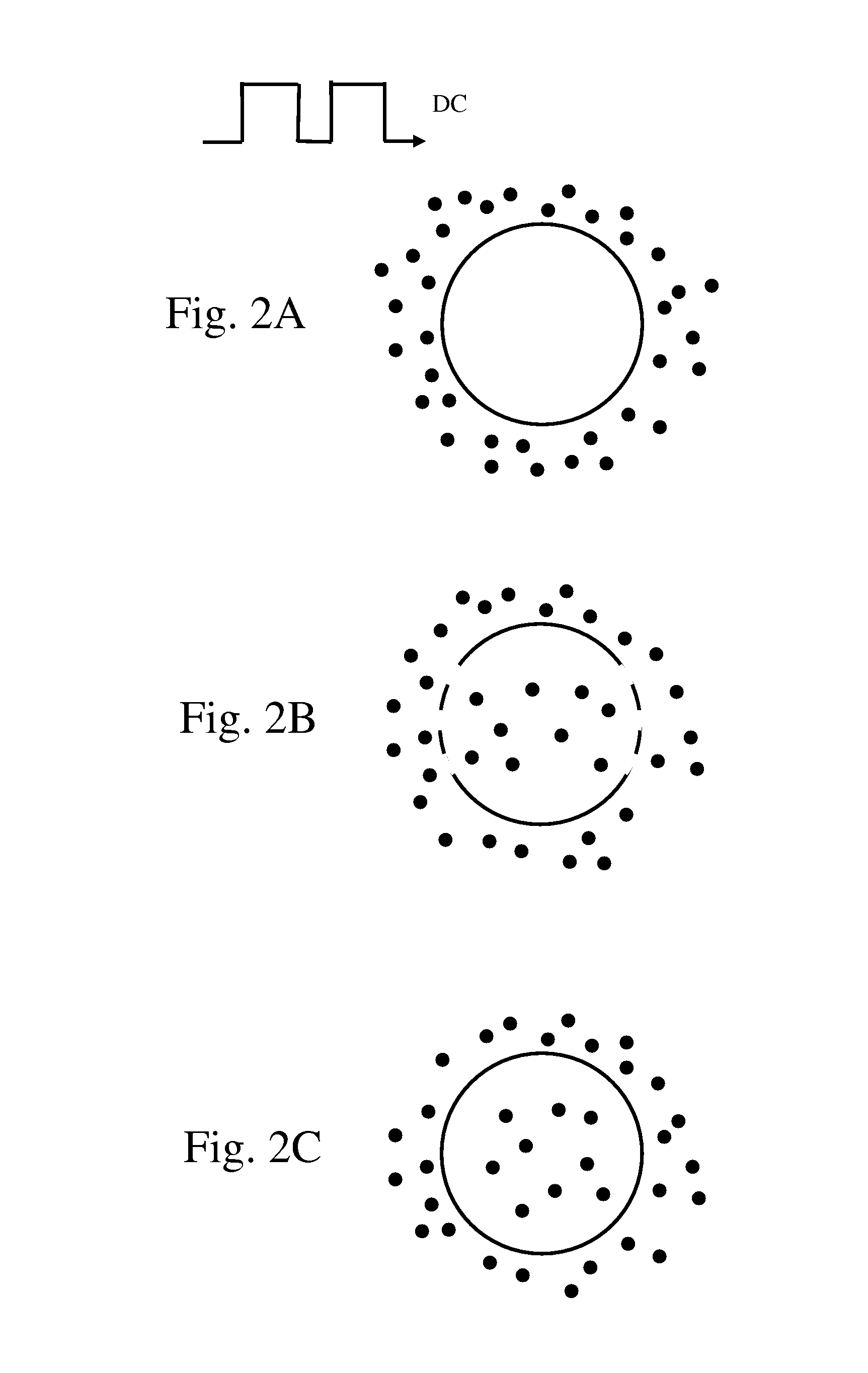Electroporation and Electrophoresis System and Method for Achieving Molecular Penetration into Cells In Vivo
a technology of electrophoresis and electrophoresis system, which is applied in the field of electrophoresis system and method for achieving molecular penetration into cells in vivo, can solve the problems of destroying cells, and reducing the efficiency of vivo electrophoresis,
- Summary
- Abstract
- Description
- Claims
- Application Information
AI Technical Summary
Benefits of technology
Problems solved by technology
Method used
Image
Examples
Embodiment Construction
[0042] A description of the preferred embodiments of the present invention will now be presented with reference to FIGS. 3-13E.
[0043] A schematic diagram of an exemplary pulse sequence is illustrated in FIG. 3. An exemplary device for delivering pulses comprises a commercial device for producing dc pulses with characteristics needed as described herein (CytoPulse PA-4000, CytoPulse Sciences, Hanover, MD). The term field strength is used herein to indicate voltage, as is understood by those of skill in the art. Field strength is the voltage applied to the cells / tissue divided by the distance between the electrodes. The duration of each pulse, the time interval between pulses, and the number of pulses are all variables in the pulse sequence of the present invention. While the waveforms shown in FIG. 3 are dipicted as rectangular, this pulse shape is not intended as a limitation, as other waveforms can also be used. For example, at least one of the first and the second pulse may be se...
PUM
 Login to View More
Login to View More Abstract
Description
Claims
Application Information
 Login to View More
Login to View More - R&D
- Intellectual Property
- Life Sciences
- Materials
- Tech Scout
- Unparalleled Data Quality
- Higher Quality Content
- 60% Fewer Hallucinations
Browse by: Latest US Patents, China's latest patents, Technical Efficacy Thesaurus, Application Domain, Technology Topic, Popular Technical Reports.
© 2025 PatSnap. All rights reserved.Legal|Privacy policy|Modern Slavery Act Transparency Statement|Sitemap|About US| Contact US: help@patsnap.com



